Looking to learn more about caring for newly laid turf?
If you’ve just laid new sod, you might be wondering how best to take care of your new lawn and help it grow nicely over time.
In this guide, we’ll explain how to take care of a new lawn after laying turf in your garden.
How to take care of a new lawn
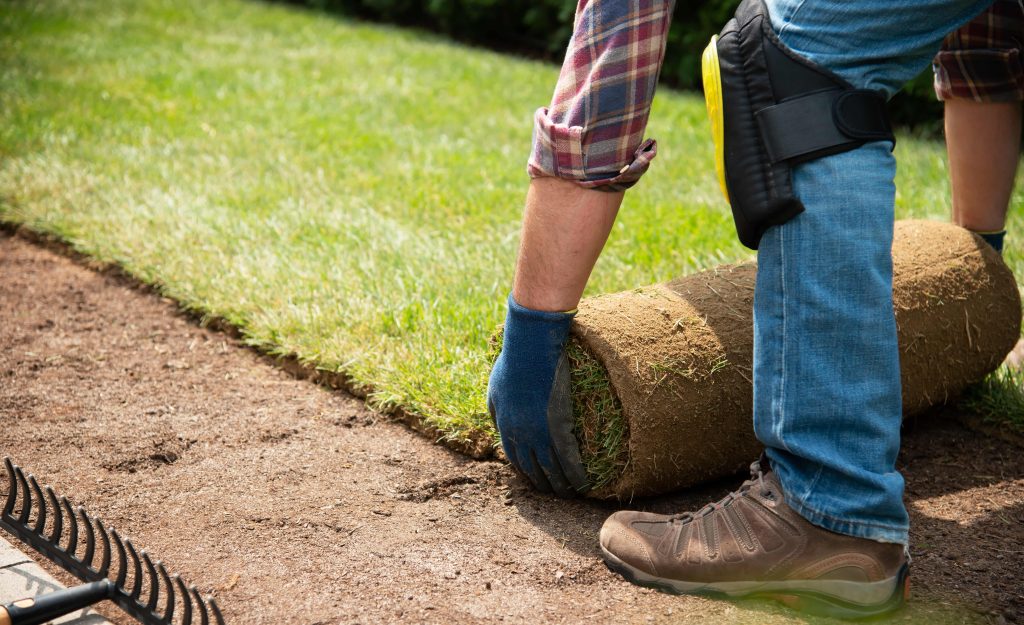
If you’ve just laid new turf, your number one goal is to help the roots take hold.
A strong root system is the key to a healthy lawn, so you need to be careful to give the lawn the moisture, light, and nutrients it needs for the roots to grow strong in the soil.
Here are some tips to help you take care of your new lawn, and avoid any issues with your grass developing.
1. Reduce foot traffic
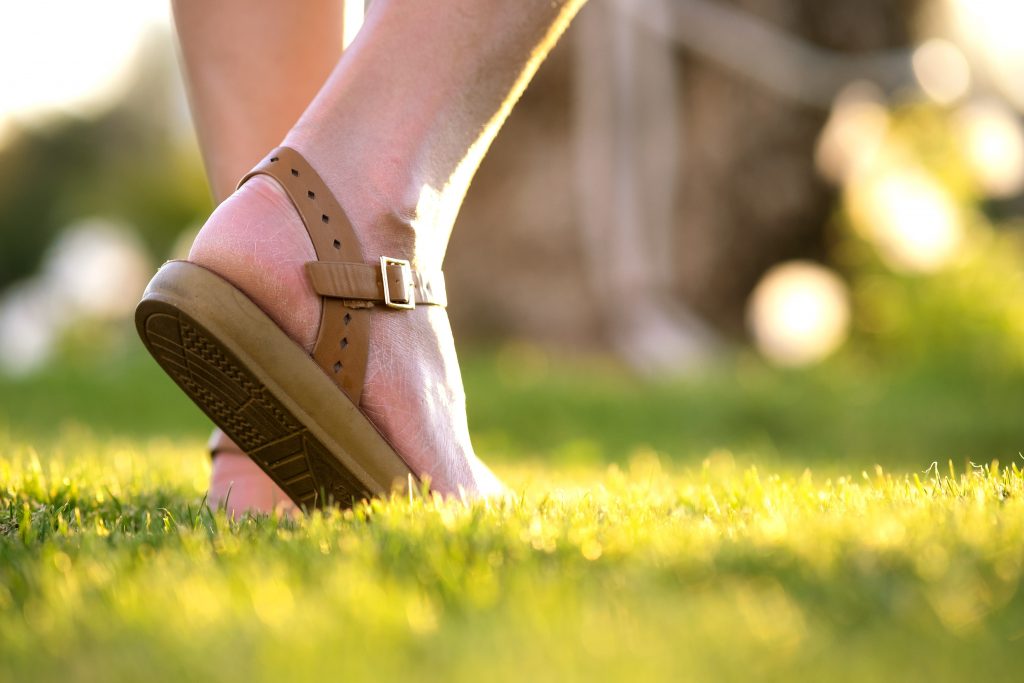
Immediately after planting new turf, it’s important to avoid walking on it for as long as possible.
You need to wait at least a month after laying new turf before you can begin to walk on your lawn. And even after this point, you want to minimise wear and tear as much as possible, so don’t go playing football on your new lawn until it’s fully established, after at least three months.
If you need to be on your new lawn, use laying boards to help distribute your weight over the largest possible area. This technique is also helpful when you lay the sod for the first time, so that you can avoid walking on the lawn as much as possible.
And of course, always avoid walking on the grass when it’s frosty. In extremely cold weather, the grass and its roots are very fragile, so you need to take extra care.
2. Give the turf plenty of water
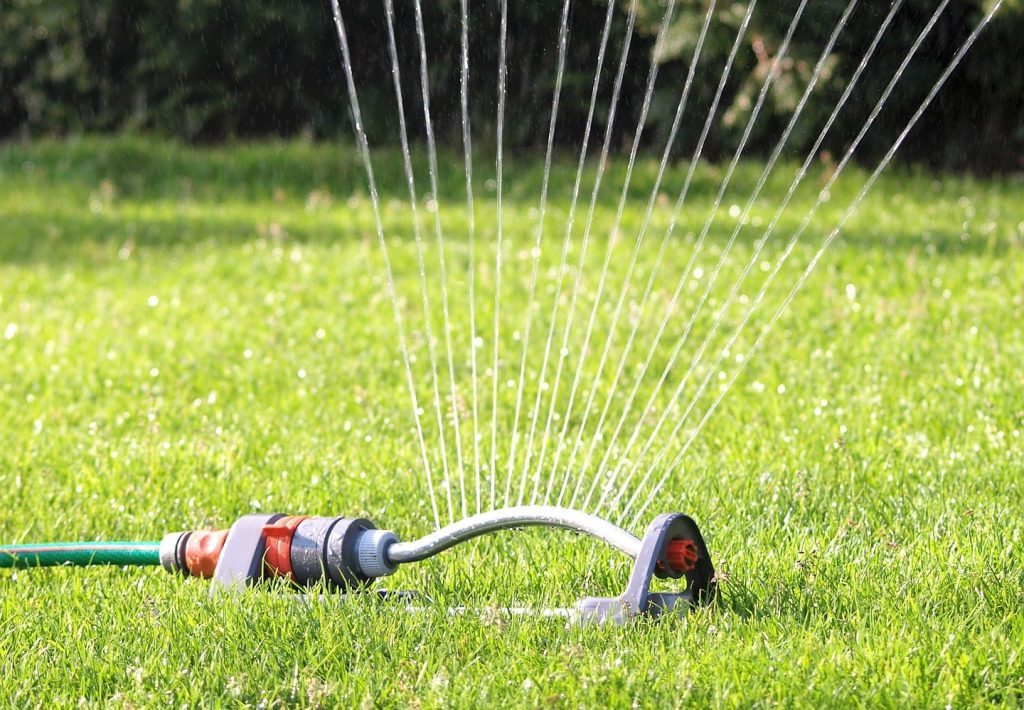
New turf requires a lot of water to begin growing properly. This is partly to help the roots integrate into the soil, but also because new turf often arrives quite dry, and needs watering to help rejuvenate it.
Immediately after putting it down, you want to give the newly laid turf a thorough soaking to get it nice and wet. Then, you should water the lawn every day for the next three to four weeks, unless it rains heavily of course. Ensure to get an even coverage, so that every square inch of turf receives a good amount of moisture.
From this point, you still need to continue watering the lawn regularly for the next few months. However, you can scale down your watering to once every two or three days. In the middle of summer, more frequent watering is required to avoid the lawn drying out.
3. Use fertiliser to feed the turf
Apart from moisture, your new lawn also needs nutrients to help it grow.
While existing lawns are often fed with mulched grass clippings from your mower, new lawns don’t grow as quickly, and therefore you won’t be able to rely on feeding them with mulch. As a result, you might like to consider using fertiliser on your garden to help new turf grow.
You want to use organic fertiliser, and only a small amount. Don’t apply it too early after laying new turf, otherwise you may damage your lawn by walking across it – instead, wait at least four weeks.
Also, don’t rake the fertiliser into the ground – you need to be more delicate. Instead, spread it as evenly as possible over the surface, and then water it into the turf.

4. Give the lawn plenty of sunlight
As we mentioned above, you need to water a new lawn extensively, especially when you’ve just put down newly laid turf. You also need to consider feeding it with fertiliser, to provide the nutrients that a new lawn needs.
However, there’s a third factor that affects new lawn growth – the amount of sunlight it gets.
It’s important to keep the lawn clear of debris, especially in large quantities. In autumn for example, it’s best to clear leaves from your new lawn as soon as possible. Ideally, you should use a leaf blower on a moderate setting, so that you don’t have to rake your new lawn.
However, you also need to consider whether the new is getting too much shade. You might like to consider cutting back any plants or tree branches that are preventing the lawn from getting the sunlight it needs, especially in the spring and autumn.
How to mow your new turf for the first time
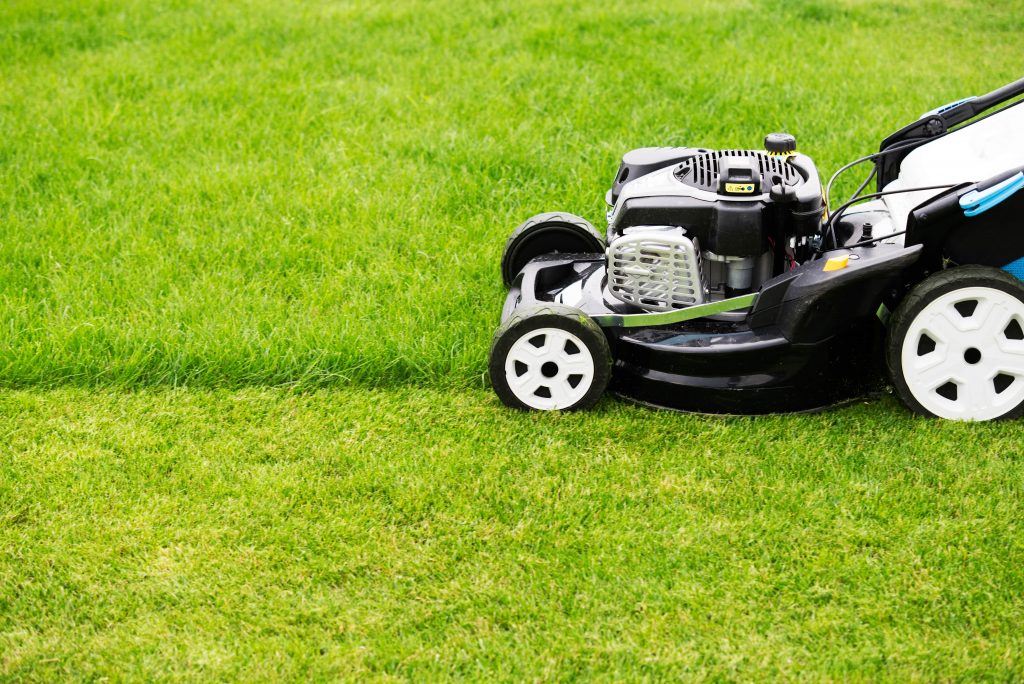
Be patient when it comes to mowing your new lawn for the first time.
Before the first cut, you need to verify that the roots are growing properly in the soil, meaning that the turf has well and truly taken hold. To check this, all you need to do is ensure that the grass is growing at a reasonable speed. If you’re getting an inch or more every week, depending on the weather and the type of grass, then you should be ready to begin mowing.
You can also check that the lawn is ready to mow by pulling upwards on a handful of grass blades. If they break off, that’s a good sign, but if the turf lifts up, it means that the root system is not yet fully rooted in the soil.
Here’s what you need to know when mowing newly laid turf for the first time.
- Mow the lawn nice and high – ideally on your mower’s highest cutting height setting, at least 60-70mm. This ensures that the first cut isn’t too much of a shock to the grass.
- It’s best to mow the grass frequently on a high setting when the turf is new. This encourages better grass growth, leaving you with a healthier, thicker lawn over time.
- Ensure that the blades on your mower are nice and sharp. The last thing you want is to tear (rather than cut) the grass blades on their first mow, as this can increase the likelihood of diseases taking hold. Read our guide to sharpening lawn mower blades.
- Also clean your mower blades before mowing new grass. This is again to prevent the risk of disease from taking hold on your new grass after contact with dirty mower blades.
- Bag your grass clippings, rather than mulching them. As we mentioned above, grass clippings can be good lawn food. However, they’re not the best source of nutrients for a new lawn. When the grass is not yet fully established, clippings can be more difficult to digest, meaning they will stay on your lawn and block sunlight for longer. Therefore, you don’t want to leave grass clippings when mowing for at least two months after laying the turf.
How to check that your new lawn is healthy
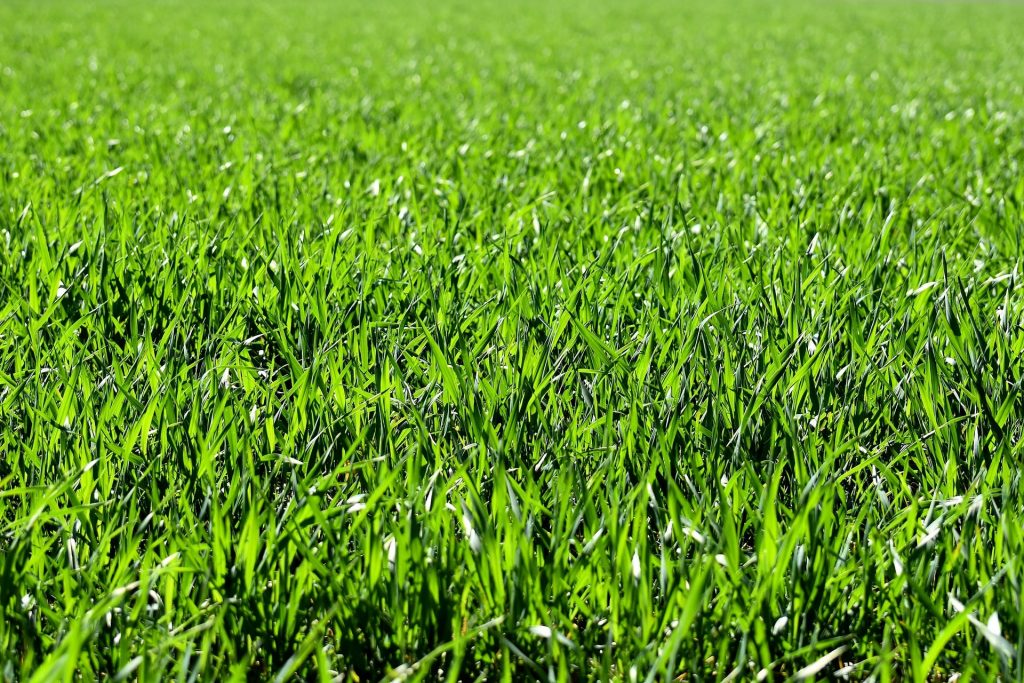
During the process of establishing new lawns, it’s easy to just follow a given lawn care process step by step. The hard part is keeping an eye on how your turf is adapting to being laid onto new soil for the first time, to ensure that your grass is growing well.
Here are some tips to help you check that your new lawn is healthy.
- The grass begins to grow after four weeks at most.
- When pulling on the grass, the turf does not lift from the ground (assuming it’s been at least a few weeks since the turf was put down).
- The newly laid turf is a good colour – either a light or a dark shade of green, depending on the type of grass you’ve purchased. The turf should not be brown, yellow, or otherwise losing its green colour.
- Your lawn is not overrun with weeds. This also depends on what the turf was laid on – if there were any remnants of weeds in the soil, they may grow through the new turf.
- There is no moss on the lawn. Although moss isn’t normally an issue on new lawns, if it begins to pop up over time, this could indicate a drainage issue, or that your lawn isn’t getting enough sunlight.
The key to managing new lawns successfully is to treat any issues as soon as they arise. Keep an eye out for discolouration or disease, and try to get on top of it as soon as possible, to give your new lawn the best chance of doing well.
Conclusion
Need advice about taking care of your new lawn?
Drop us a comment below with any questions or comments, and we’ll try to get back to you within 24 hours.

I’m Josh, and I’m the head writer at Lawn Care Pro.
I love everything lawns, but I’m a bit of a lawn mower nerd. I spend a lot of my free time tinkering with mowers, and planning my mowing schedule for the next few weeks.
I’m also into cars, which comes in very helpful when servicing a mower engine!

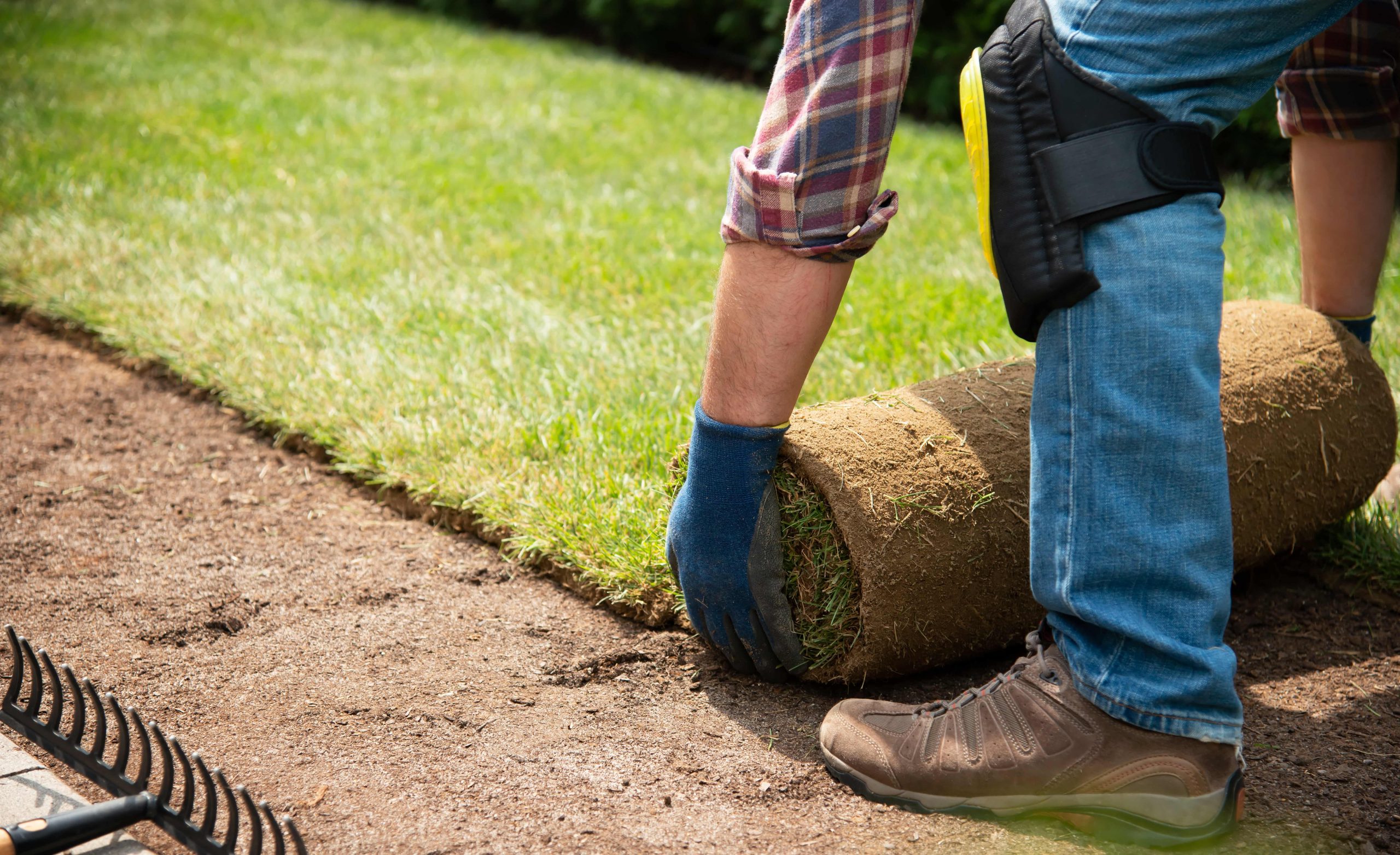
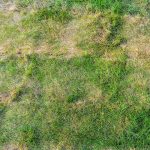



Hi! We laid approx 20 square metres of turf at the end of March. The surface had been prepared and fish/blood/bone applied. The turf was laid the morning after delivery. It was well watered-in. It has had 3 cuts so far; the first was a bit short in one stripe , but appeared to recover well. It certainly grows well! However, we have noticed that the grass is yellowing at ground level, i.e. from a distance it looks lovely and green, but when viewed from above the area directly above the soil appears yellow and quite sparse.
Do you think it needs feeding +/- more regular cutting?
Any help would be appreciated 🙂
Hi there,
Giving your lawn a feed with organic fertiliser would be a good idea to reduce the yellowing/sparseness. These types of issues can also occur from applying too much fertiliser though, so it’s important not to overdo it.
We’d also recommend checking your drainage. Given how much new turf needs watering, drainage issues can sometimes cause these types of problems on the grass. If the soil is quite compacted, aeration might be helpful.
Also, check that your mower blades are nice and sharp, to ensure the best possible cut.
If the issues persist, you might want to consider overseeding, to help the grass recover. Please see our guide on yellow grass/sparseness for more information: https://lawncarepro.co.uk/why-is-my-grass-turning-yellow/
Thanks